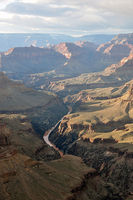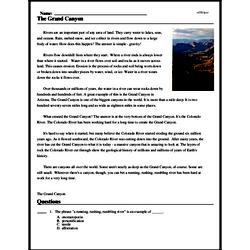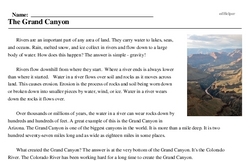The Grand Canyon
Rivers are an important part of any area of land. They carry water to lakes, seas, and oceans. Rain, melted snow, and ice collect in rivers and flow down to a large body of water. How does this happen? The answer is simple - gravity!
Rivers flow downhill from where they start. Where a river ends is always lower than where it started. Water in a river flows over soil and rocks as it moves across land. This causes erosion. Erosion is the process of rocks and soil being worn down or broken down into smaller pieces by water, wind, or ice. Water in a river wears down the rocks it flows over.
Over thousands or millions of years, the water in a river can wear rocks down by hundreds and hundreds of feet. A great example of this is the Grand Canyon in Arizona. The Grand Canyon is one of the biggest canyons in the world. It is more than a mile deep. It is two hundred seventy-seven miles long and as wide as eighteen miles in some places.




